-
Use Cases
-
Resources
-
Pricing
Early Developments
Writing and printing developments
700 - 799
% complete
The history of graphic design can be traced back to the 8th century when writings and printing technologies started to develop, laying the foundation for the longer history of communication.
Naskh alphabet invented
1100 - 1199
% complete
The Naskh alphabet, featuring curves instead of the angled lines of Kufi script, was invented in the 12th century, bringing a new style of writing.
Image source: Naskh (script)

Chinese playing cards introduced
1294
% complete
Chinese playing cards, as we understand them today, were introduced around 1294, marking an early form of graphic design in the gaming industry.
Earliest references to playing cards in Europe
1377
% complete
The earliest authentic references to playing cards in Europe date back to 1377, indicating the spread of playing card culture from Asia to Europe.
Image source: Playing card

Evolution of Printing Techniques
German printers introduce woodblock printing for playing cards
1400 - 1499
% complete
In the 15th century, German printers introduced woodblock printing techniques to produce playing cards, revolutionizing the mass production of these graphic designs.
Image source: Woodblock printing
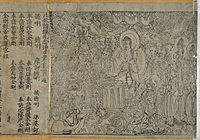
Johann Gutenberg invents the moveable-type printing press
1450
% complete
Around 1450, Johann Gutenberg's invention of the moveable-type printing press revolutionized the printing industry, making books widely available in Europe and paving the way for graphic design.
Image source: Johannes Gutenberg

Daniel Hopfer pioneers etching technique for printmaking
1470 - 1536
% complete
Daniel Hopfer, a German artist, pioneers the use of etching, a technique that combines intaglio and relief printing, revolutionizing the field of printmaking and graphic design.
Image source: Etching
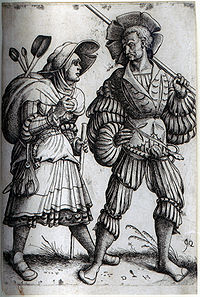
William Caxton produces the first printed poster
1477
% complete
In 1477, William Caxton, an English printer, produced the first printed poster, marking an important milestone in the history of graphic design.
Image source: William Caxton

Copper-plate engraving replaces wood-block printing for playing cards
1500 - 1599
% complete
During the 16th century, copper-plate engraving replaced wood-block printing and hand coloring for the production of playing cards, enhancing the quality and intricacy of the designs.
Image source: Intaglio (printmaking)

Alois Senefelder invents lithographic process for poster creation
1798
% complete
In 1798, Alois Senefelder, a Czech inventor, introduced the lithographic process for printing, making the creation of posters feasible and contributing to the development of graphic design.
Image source: Alois Senefelder
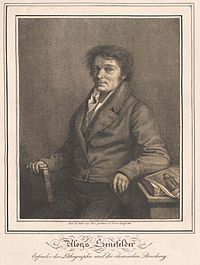
Color lithography revolutionizes mass printing of playing cards
1800 - 1899
% complete
The introduction of color lithography in the early 19th century revolutionized the mass printing of playing cards, allowing for vibrant and detailed graphic designs.
Image source: Lithography

Advertising posters emerge
1870
% complete
In 1870, advertising posters emerged as a popular medium for promoting products and services, leading to the rise of commercial graphic design.
Image source: Poster

Notable Graphic Designers
Ludwig Hohlwein becomes a prolific German posterist
1874
% complete
Ludwig Hohlwein, born in Germany in 1874, becomes one of the most prolific and brilliant German posterists of the 20th century, leaving a significant impact on the field of graphic design.
Image source: Ludwig Hohlwein

Graphic Design in the 20th Century
Otto Neurath introduces graphic design for social and economic trends
1921
% complete
In 1921, Otto Neurath, an Austrian social scientist, introduced graphic design as a means to facilitate the understanding of various social and economic trends through the creative use of statistical charts.
Image source: Otto Neurath

Museum of Economy and Society opens with graphical displays
May 1925
% complete
In May 1925, the Museum of Economy and Society opened to the public, featuring graphical displays known as ISOTYPE charts (International System of Typographic Picture Education), a style of presentation developed by Otto Neurath.
Image source: Isotype (picture language)

Gerd Arntz designs pictograms for ISOTYPE system
1928
% complete
In 1928, Gerd Arntz, a German artist, was invited by Otto Neurath to Vienna to work on further developing the ISOTYPE system, designing around 4000 different pictograms and abstracted illustrations.
Image source: Gerd Arntz

Superman debuts in Action Comics
1938
% complete
Superman, created by Jerry Siegel and Joe Shuster, makes his debut in Action Comics in 1938, becoming one of the most iconic superheroes and inspiring countless graphic designs.
Image source: Superman
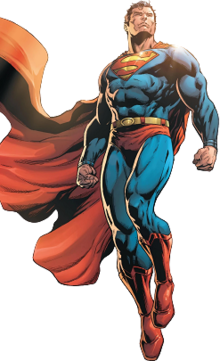
Pictograms first appear at the Olympics in London
1948
% complete
Pictograms, inspired by the work of Gerd Arntz, made their first appearance at the Olympics in London in 1948, becoming an integral part of graphic design in sports events.
Image source: Pictogram

Roy Lichtenstein reworks Ira Schnapp's lettering for Drowning Girl
1963
% complete
Roy Lichtenstein reworks Ira Schnapp's lettering in a romance story splash page, creating the iconic composition known as Drowning Girl, which becomes a celebrated work of pop art and graphic design.
Image source: Roy Lichtenstein

Life magazine features explosion of psychedelic art on posters
Sep 1, 1967
% complete
Life magazine's cover and lead article for the September 1, 1967 issue highlights the explosion of psychedelic art on posters, showcasing the artists as leaders in the hippie counterculture community.
Image source: Life (magazine)

Otl Aicher designs iconic pictograms for Munich Olympics
1972
% complete
Otl Aicher, the design director for the Munich 1972 Olympics, created a set of iconic pictograms that are hailed for their elegance and clarity, setting a high standard for Olympic graphic design.
Image source: Otl Aicher

Otl Aicher creates official posters for the 1972 Munich Olympics
1972
% complete
Otl Aicher creates the official posters for the 1972 Munich Olympics, showcasing his design prowess and leaving a lasting impact on Olympic graphic design.
Image source: 1972 Winter Olympics

Milton Glaser works on marketing campaign for New York State
1977
% complete
In 1977, graphic designer Milton Glaser was recruited by the New York State Department of Commerce to work on a marketing campaign for New York State, showcasing his influential design work.
Image source: Milton Glaser

Batman: The Killing Joke cover art
1988
% complete
The cover art of Batman: The Killing Joke, featuring a haunting image of the Joker, becomes an iconic graphic design and a seminal work in the Batman comic book series.
Image source: Batman: The Killing Joke

First website is constructed
Aug 1991
% complete
In August 1991, the first website is constructed by Tim Berners-Lee, marking a significant milestone in the history of graphic design and the beginning of the World Wide Web.
Image source: World Wide Web

Marjane Satrapi's Persepolis adapted into an animated film
2007
% complete
Marjane Satrapi's graphic novel Persepolis is adapted into an animated film of the same name, receiving critical acclaim and sharing a Special Jury Prize at the Cannes Film Festival in 2007.
Image source: Persepolis (comics)
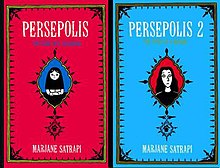
Fairey's portrait of Obama's "Hope" image acquired by Smithsonian
Jan 2009
% complete
In January 2009, Shepard Fairey's mixed-media stenciled portrait version of Barack Obama's "Hope" image is acquired by the Smithsonian Institution for its National Portrait Gallery, recognizing the impact of graphic design in political campaigns.
Image source: Barack Obama "Hope" poster

Irene Jacobs creates sport pictograms for the 2010 Winter Games
2010
% complete
Dutch illustrator Irene Jacobs of I'm JAC Design created twenty-four sport pictograms and a series of sport illustrations for the 2010 Winter Games, showcasing her talent in contemporary graphic design.
Image source: Irène Jacob

Key Facts
- Gutenberg's invention of the printing press in the 15th century revolutionized graphic design.
- The Industrial Revolution in the 19th century led to advancements in typography and advertising.
- The Bauhaus school, founded in 1919, played a significant role in the development of modern graphic design.
- The introduction of computers in the late 20th century revolutionized the field of graphic design.
- Contemporary graphic design often incorporates digital technologies and interactive elements.
Source
This History of Graphic Design timeline was generated with the help of AI using information found on the internet.
We strive to make these timelines as accurate as possible, but occasionally inaccurates slip in. If you notice anything amiss, let us know at [email protected] and we'll correct it for future visitors.
Create a timeline like this one for free
Preceden lets you create stunning timelines using AI or manually.
Customize your timeline with one of our low-cost paid plans
Export your timeline, add your own events, edit or remove AI-generated events, and much more
Free
$
0
free forever
No credit card required.
Basic
$
10
/month
billed annually
Cancel anytime.
Pro
$
16
/month
billed annually
Cancel anytime.
Common Questions
Can I cancel anytime?
Yes. You can cancel your subscription from your account page at anytime which will ensure you are not charged again. If you cancel you can still access your subscription for the full time period you paid for.
Will you send an annual renewal reminder?
Yes, we will email you a reminder prior to the annual renewal and will also email you a receipt.
Do you offer refunds?
Yes. You can email us within 15 days of any payment and we will issue you a full refund.
What if I have more questions?
Check out our pricing docs or send us an email anytime: [email protected].